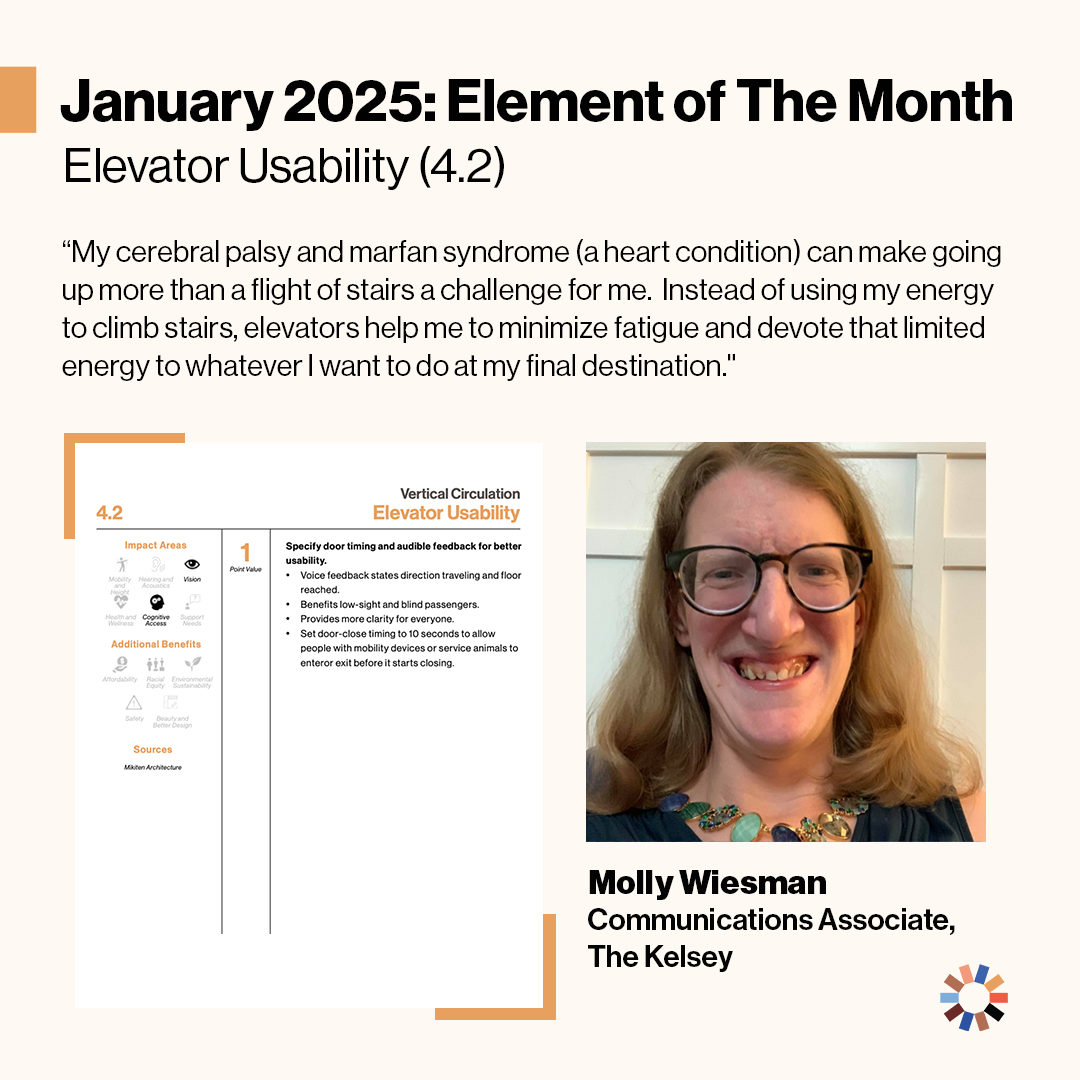The Inclusive Design Standards equip designers, builders, and developers with guidelines and frameworks for disability-forward housing creation. It highlights cross-disability accessibility and design decisions that are anchored in inclusion. Each month we feature one of our partners and the Element they’re most excited about.
Molly Wiesman | Communications Associate | The Kelsey
For this month’s Element of the Month, we’re featuring Molly Wiesman, our Communications Associate, who has been on The Kelsey team for over two years. Today, Molly wants to highlight the Element of Elevator Usability. Molly emphasizes the importance of elevators for people with mobility disabilities, even in buildings that may only be two stories. She also points out that people with disabilities using mobility aids may need more time when entering or exiting elevators.
Name of Element: Elevator Usability (4.2)
Description: Specify door timing and audible feedback for better usability.
- Voice feedback states direction traveling and floor reached
- Benefits low-sight and blind passengers
- Provides more clarity for everyone
- Set door-close timing to 10 seconds to allow people with mobility devices or service animals to enter or exit before it starts closing
Design Category: Interior Spaces
Impact Area(s): Vision; Cognitive Access
Why is this element important to you, personally or for the project?
My cerebral palsy and marfan syndrome (a heart condition) can make going up more than a flight of stairs a challenge for me. In attempting to go up stairs, I get fatigued pretty quickly. There was a building at my alma mater that had no elevator and I had class on the fourth floor. The thing about elevators is they enable me to save energy to perform necessary tasks I need to do once I arrive at my final destination. Instead of using my energy to climb stairs, elevators help me to minimize fatigue and devote that limited energy to get to my final destination safely. When the door-close time for elevators is set to 10 seconds, it allows people like me more time to think about my movements before making them when exiting an elevator. The voice feature that states the floor or the traveling direction can be extremely helpful for someone with low to no vision. Proof that designing for accessibility improves living conditions for everyone!
How would you explain this Element to a 2nd grader?
Elevators help people who can’t climb stairs or who want to conserve energy. Getting to their desired floor in buildings without elevators can be impossible. For people who may be blind or have vision issues, a voice announces the floor reached. Also, a timer allows extra time for entering / exiting the elevator, allowing more time for those who need it.
What recommendations would you make to someone designing a disability-forward housing project (related to the design standards)?
In my opinion, every building should have an elevator. According to the Americans with Disabilities Act: If a business that operates with 3 floors or more, the business is required to have a public elevator. I feel elevators are important and totally necessary in two story buildings for mobility access needs that might include stairs or other barriers to the second floor.
